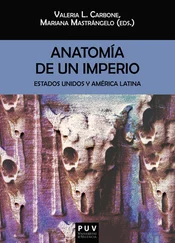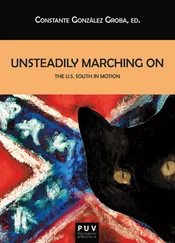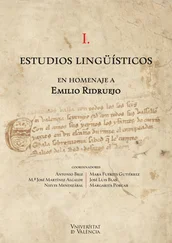In the U.S. the “North” and the “South” are not equal and symmetrical terms. Far from being purely descriptive and neutral geographic directions, they are “are foundationally hierarchical terms: rather than denoting an equally weighted, descriptive binary, ‘North’ serves as center and norm, while ‘South’ stands as deviation, in need of intervention and reform from without” (Greeson, Our South 12). When the South is removed from the hierarchical North/South dyad by the New Southern Studies, the South is no longer positioned as the exotic/peculiar Other at the margins of the American imaginary. Disentangling the South from the North/South dichotomy shifts old paradigms from the local/national towards the transnational/hemispheric. 12 In their introduction to American Cinema and the Southern Imaginary Barker and McKee see this expansion of the Southern imaginary to be necessary
because never more so than today has the South failed to call forth a set of stable defining features. The site of dramatic demographic shifts, transnational industry, and fissured red state power, the South has, if anything, become a more complicated and necessary idea to examine in assembling national, hemispheric, and global narratives of power and identity. (2)
Such critical analyses of the South question and challenge, rather than reject the boundaries, and in so doing they hybridize cultural practices. Barker and McKee observe, “[r]ecent scholarship is not invested in denying the particularities of place or in disavowing the contributions of earlier work. Rather than identify the factors isolating locations, it seeks to plumb the nexus of the local, the national, and the global to track the resonances linking them” (2-3).
Additionally, “old” Southern studies’ discussions about “our familiar notions of Good (or desperately bad) Old Southern White Men telling stories on the porch, protecting white women, and being friends to the Negro” (Baker and Nelson 231) are pushed from the center of concerns of Southern studies to its margins. Such a de-centering of discourse allows the New Southern Studies to “construct and survey a new scholarly map of ‘The South’” (Baker and Nelson 243). As such, the South can be vicariously explored through the transgressions of its center. Explorations of the peripheries of what have been considered core features of “Southernness” stretch the traditional boundaries of regional identification. Hence, cultural practices and literary representations which are incorporated and/or transgressed redefine the centers and peripheries of Southern studies. The New Southern Studies concentrates on boundary crossings, rather than on creating a fixed Southern imaginary. Southern cultural identities and practices are redefined through adoption of diasporic, translocal, cross-cultural perspectives, which rescue them from the exclusion and marginality of the “old” Southern studies discourse. Additionally Southern studies scholars can redefine the central/marginal discourse of canonical texts and find connections with other texts when viewed through such critical lenses.
The center and its margins are not separable; they are constructed within interrelating and dependent hierarchies of superiority and inferiority. In the process of nation-building the South became the margins to the center; it became the “antithesis” of the nation and repository of American guilt (Griffin 56-9). 13 Yet, this differentiation in the construction of subjectivity is partially built on the repressed belief and fear of latent similarity between the South and the rest of the nation. Therefore, what is despised and denied, and thus peripheral and marginalized as the Other, can actually be seen as symbolically central to the American imaginary and as such constituting one of the core elements of the dominant culture. Greeson points to this contradictory impulse in construction of national/regional identities: “what is materially peripheral to the modern nation often becomes symbolically central to it” (2). Thus, evocative, conflicting images of the South depend on radically different perspectives in the discourse of power and hierarchy:
our South appears in U.S. literature to embody both sides of the disavowed binary: simultaneously colonial and colonized, it diverges from the nation writ large on the basis of its exploitativeness — as the location of the internal colonization of Africans and African Americans in the United States—and on the basis of its exploitation —as the location of systemic underdevelopment, military defeat, and occupation. This South, which emblematizes the familiar coercive forms of human society, is from the start essential to conceptualizing “the United States” as a new national form. (Greeson 3)
Similarly, Jon Smith and Deborah Cohn assert that the American South is “compellingly … both familiar and exotic, both Self and Other … [it is] a space simultaneously (or alternately) center and margin, victor and defeated, empire and colony, essentialist and hybrid, northern and southern (both in the global sense)” (9).
The margins can trouble the center by transgressing its hierarchy, order, and boundaries. Such hierarchy inversion will reveal the mechanisms of ordering and discriminations which have been used by the center to structure and legitimate the established order. By responding to the literary canon of the center, marginalized literary voices can deconstruct Southern regional identities, cultural practices and constructions. The position of authors marginalized due to their race, gender, ethnicity or sexuality who decide to write back 14 is charged with destabilizing power: their ex-centric view and experience of the Souths ( sic ) recover them from estranged and distorted representation of their Souths. The title of this volume – Ex-Centric Souths: (Re)Imagining Southern Centers and Peripheries – announces a critical perspective which attempts to interrogate the Southern imaginary and rescue it from fragmentation, reduction, misrepresentation, and distortion in the national imaginary. Ex- centric writings, capitalizing on the Greek ἐξ, meaning “from out of” or “away from,” 15 intend to rescue the Southern imaginary from an ontological condition of estrangement and reductionism. This volume aims to do what Barbara Ladd suggested Southern scholars do; that is, to
reimagine the or a South or multiple Souths to take full measure of the significance of alternative memories, histories, and modes of cultural expression. Alterity in the southern United States designates not only the submerged voices of women, minorities, and the poor but also colonial, postcolonial, regional, and transnational textualities obscured by cultural nationalism. (“Literary Studies” 1633)
Such act of reimagining of the Souths radically repositions marginalized histories, reclassifies voices which have been minimized, obscured and distorted, and recovers cultures and narratives which have been made ex-centric.
* * *
Ex-Centric Souths is organized around three central concepts, all of which reimagine the centers and peripheries of the American South. The first section, “Transnational South: the Caribbean Connection,” begins by locating the American South in the broader context of the circum-Caribbean region. The second, “Transcending the Southern Sense of Place,” examines some of the concerns connected with one of the South’s most mythologized traits – Southern sense of place. The final section, “The Southern Urge to Tell,” addresses the narrative and rhetorical potential of various texts of culture to revisit, understand and explain the region. The overwhelming majority of the contributions contain a wealth of new approaches and daring conceptualizations of the region. Ex-Centric Souths features the work of both established and emerging scholars, providing varied and interdisciplinary approaches to Southern centers and peripheries. Even though the articles give a strong sense of the South’s complexity, the coverage of topics is certainly not exhaustive, nor could it ever be.
Читать дальше












